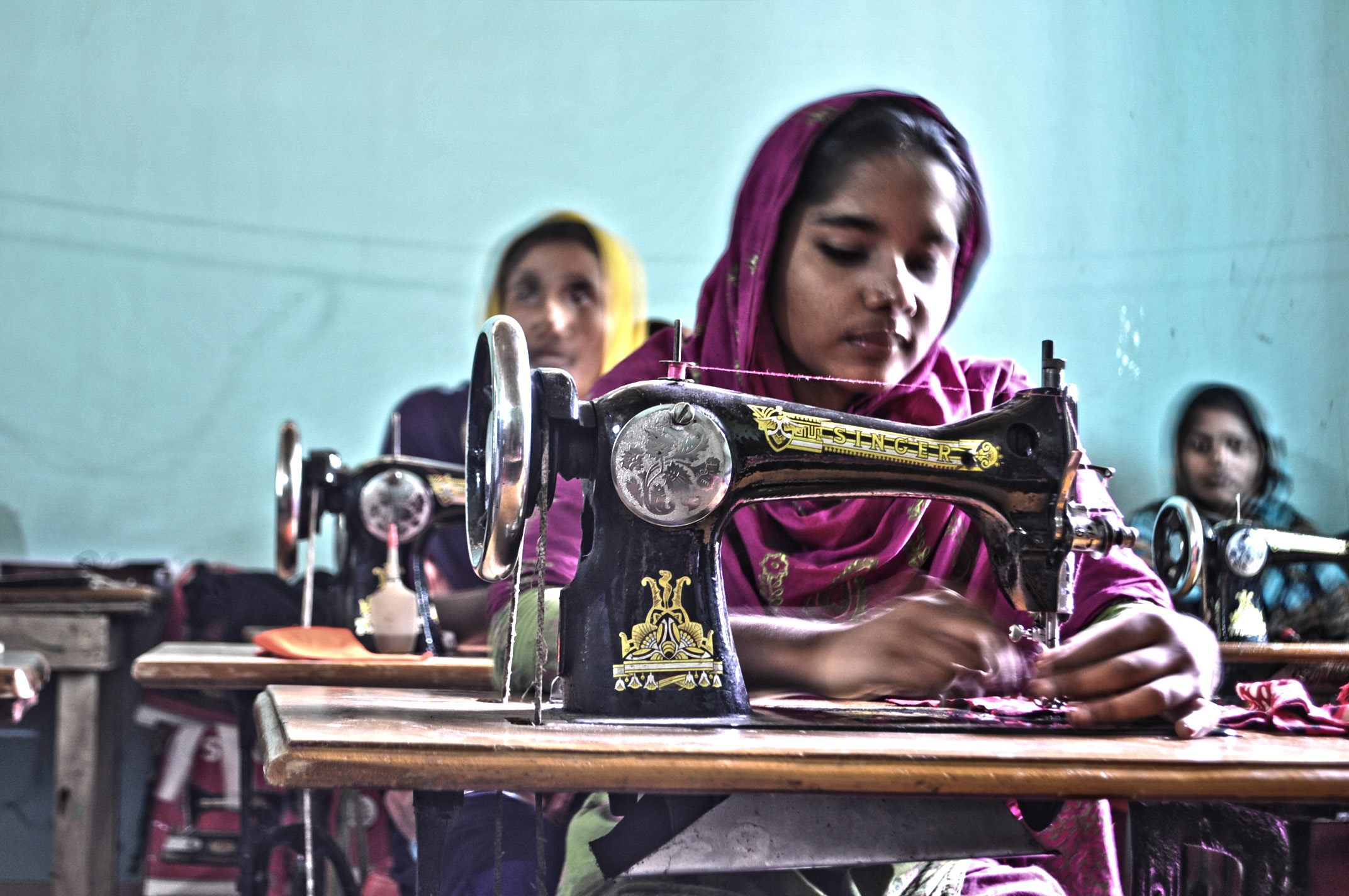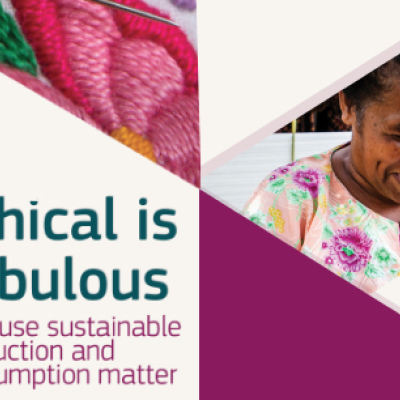Following the April 2013 disaster at a garment factory in Bangladesh, the European Commission is promoting health and safety in the global industry, as well as sustainable production, consumption and decent work.
The collapse of the Rana Plaza building killed 1,130 people, making it one of the deadliest building collapses ever. It also showed up the appalling treatment of many people who make clothes: after cracks were discovered in the building the day before the accident, the shops and the bank on the lower floors were immediately closed – but garment workers were ordered to turn up to work.
The deaths pointed to limits in the gains that globalisation has brought to developing countries. While industries such as clothing have created jobs, these are not always in safe conditions, at reasonable levels of pay or respectful of the rights of women, who make up the bulk of the workforce. “The Rana Plaza was a wake-up call,” says Roberto Ridolfi, Director for Sustainable Growth and Development at the Directorate General for International Cooperation and Development. “We want to engage with all relevant stakeholders, such as fashion companies, consumer groups, donors and development partners. This is not just about creating jobs, but creating decent jobs.”
The Commission is looking into how to achieve decent working conditions and make the garment industry more sustainable, through improvements in areas such as health, gender, human rights, sustainable production and consumption. Governments, businesses and consumers all need to take responsible action throughout the whole supply chain: governments, for example, should better enforce international standards and commitments.
One priority is the factories where clothes are made, which is the most labour-intensive part of the clothing industry. “People are buying clothes every day, so garments are in the forefront of the entire sector of textiles, clothing and footwear,” says Rupa Ganguli, Sector Specialist, Managing Director, Clothing Connect B.V. and Founder, SPINNA Circle Ltd. “Many times you look at it as one big sector, but actually they’re all very diverse supply chains. To do a good job, you need to focus a little bit and look at which one to pick first and then address the issues in that supply chain, before taking on other supply chains.”
A vast source of jobs
The garment industry matters because of its scale and because it encapsulates the relationship between rich-country consumers and workers in the developing world. Its importance for developing economies means that it often provides knock-on effects in society and other industries.
In Cambodia, for example, there is now a minimum wage that applies to the garment industry, and which also acts as a reference for wages across the economy. Many women leave school early in order to work in the garment sector and support their families, not always with the desired outcome.
From the outside, it is often hard to tell how far workers are benefiting from their jobs. “One of the key issues for an EU initiative is transparency,” says Ganguli – “understanding whether workers are being treated fairly and the share they get of the price of a garment.”
Women’s rights are likely to be another focus for the EU. Women make up the bulk of the garment workforce, but few factories are owned or managed by them. In the rare cases that women are involved in management, the factories are often more receptive to needs such as childcare and women appear to work more effectively, says Bart Slob, Ethics at Work. “We see that in factories where women are involved in management, this is a motivational factor for the women who work on the shop floor to perform better,” he says. “There are few successful women entrepreneurs in the sector, and this is something we would like to change.”
Unions could do more to push for the changes needed by women, says Fiona Ramsey, Head of Operations, Delegation of the European Union to Cambodia. “Most of the union representatives are men,” she says. “So they don't talk about separate bathrooms for women and maternity leave doesn't come so high up on their agenda. This gender dynamic needs to be addressed.”
Despite numerous clear areas targeted for improvement, experts warn of auditing difficulties. Child labour is particularly hard to monitor because so much garment work is sub-contracted. That means that a retailer cannot be sure that the work being done is carried out in a factory that does not employ children. “You might place an order in one factory, but due to capacity issues that factory sources out the work to another one,” says Ganguli. “Child labour is a much bigger issue in the subcontracted factories, which are not under focus. It's quite appalling to see that child labour still exists in spite of all the visibility and discussion around it.”
According to Ganguli, labelling schemes can help inform consumers, but they are often hard to understand. First, there has been a proliferation of different labels and certifications such as Fairtrade, leading to confusion among consumers and even factories. Moreover, the labelling often concerns raw materials and fabrics. “But you don't see that much about what the worker was paid or the percentage of the retail price that went to the worker's salary,” Ganguli says. “So labels don't actually show that much about the garment production.”
If monitoring and labelling do succeed, that will let consumers drive progress through their purchase decisions. “They will be the game changers,” says Jean-François Cautain, Ambassador of the European Union to Pakistan. “They’ll say: 'I don’t want to buy from there because I know that it has not been produced in a responsible way – and I’m ready to pay five euros more for my T-shirt because I know that in this country it has been produced in a way that respects workers'.”
One driver of change could be greater added value in factories. The garment industry is highly mobile, and buyers can easily switch to factories in other countries. Currently, the existing garment sector in Cambodia is based on unskilled inputs for low-value clothing, and any rise in costs could see the orders going to, say, Bangladesh or Myanmar. The solution, says Ramsey, is more training to raise skills. “The Cambodian government is becoming aware of this and very concerned about it,” she says. “They need to diversify and go to higher-value products. For that they need skilled labour.” If workers gain skills, they might also gain status and better conditions.
| On Monday 25th April the European Commission will organise the first High-level Conference on Responsible Management of the Supply Chain in the Garment Sector. Taking place one day after the third anniversary of the Rana Plaza factory collapse in Bangladesh, it will promote successful existing initiatives, including from Member States and industry, and provide a platform for continuing the dialogue at EU level. The outcomes of this conference as well as the documents will be shared in a new capacity4dev.eu working group on Garments, which will be launched during the conference. |
This collaborative piece was drafted by Sebastian Moffett with input from Milena Pirolli and with support from the capacity4dev.eu Coordination Team. Teaser image credit: Bangladeshi women sewing clothes via Wikipedia; article image credit: Dhaka Savar Building Collapse by rijans via Creative Commons under the ShareAlike license.





Log in with your EU Login account to post or comment on the platform.